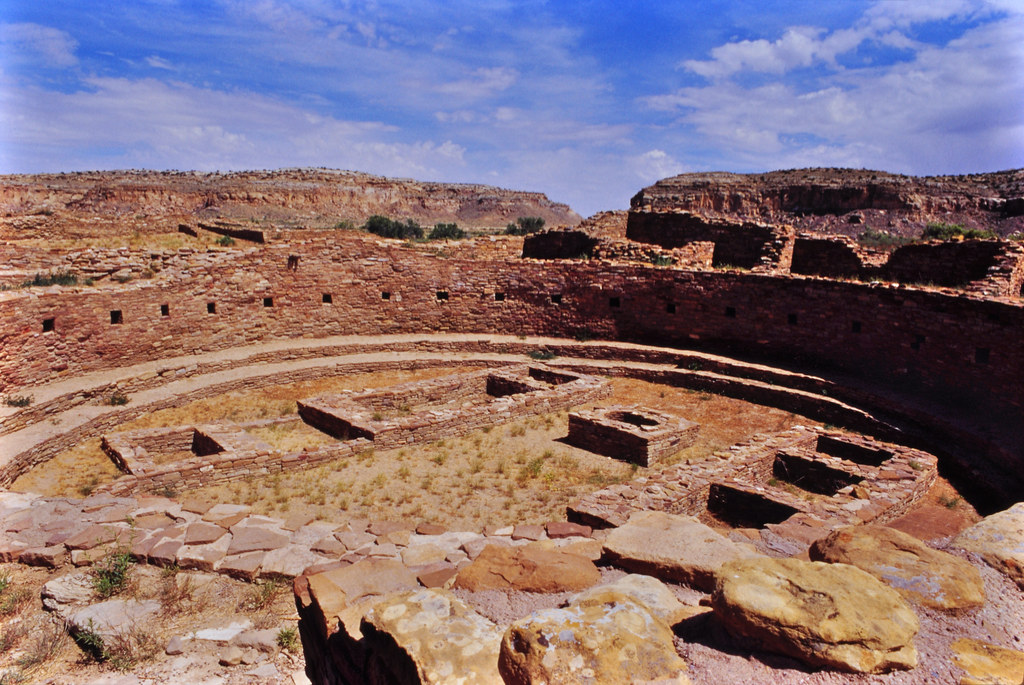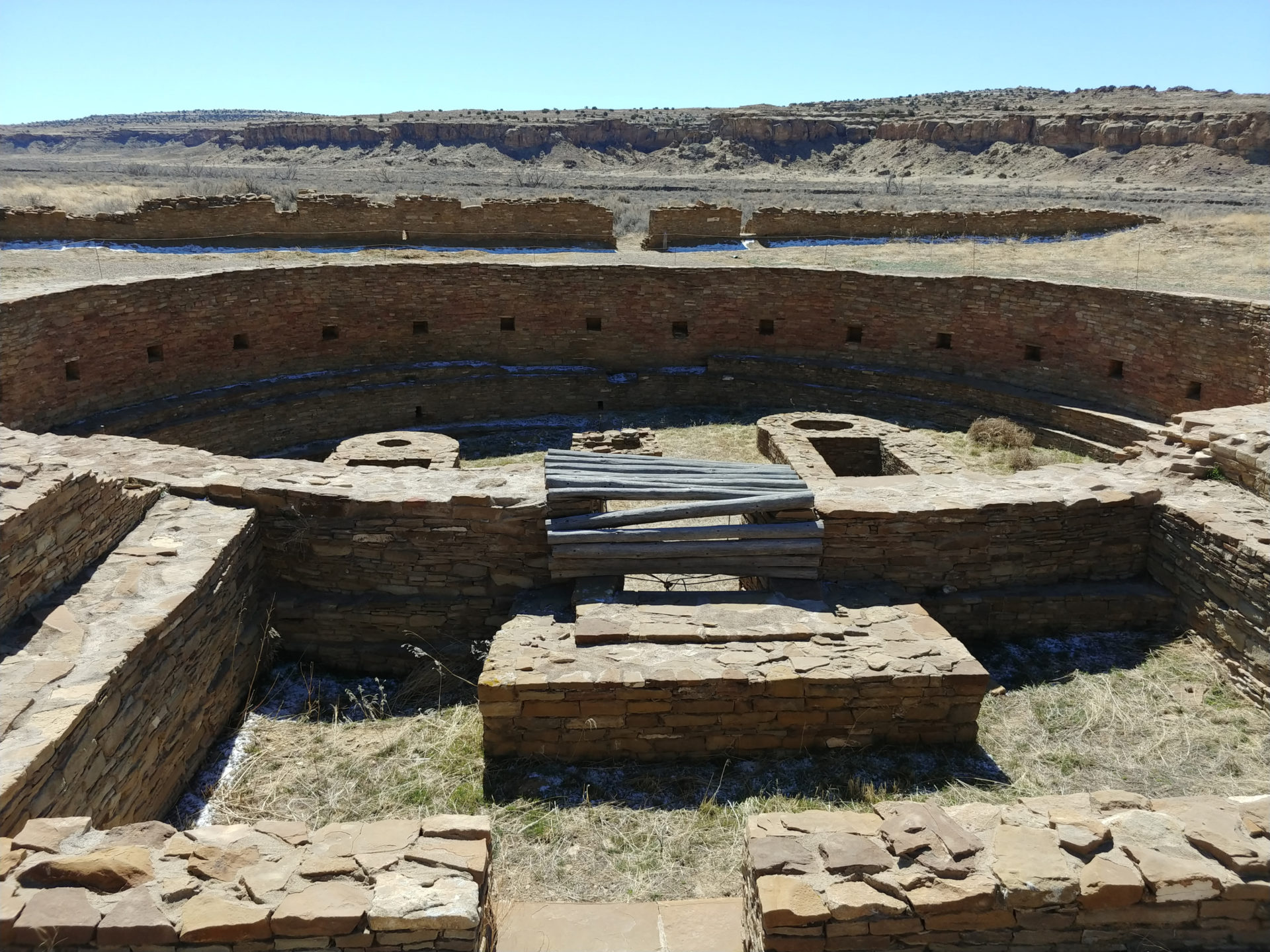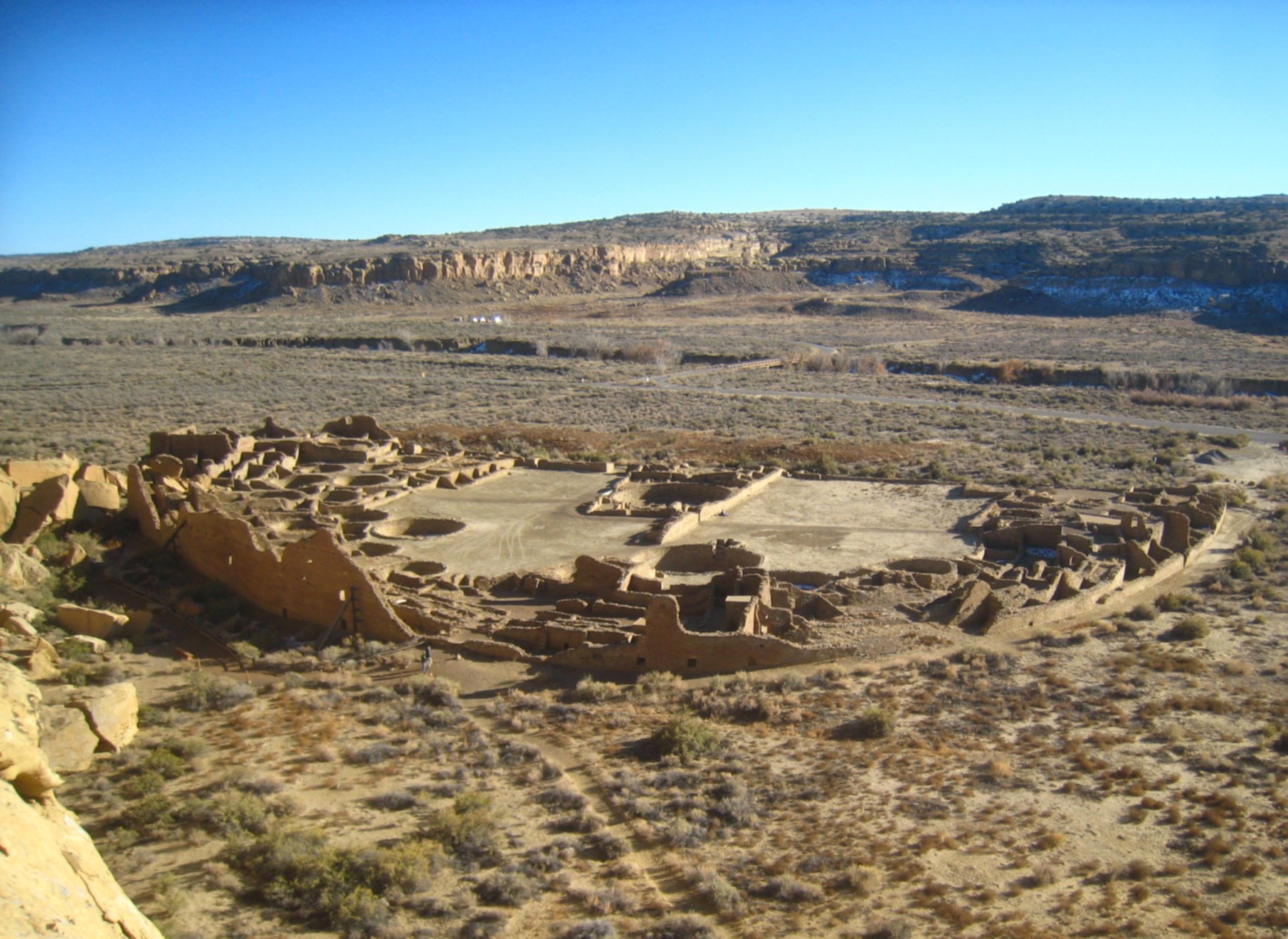Chaco Culture National Historical Park, which contains Chaco Canyon, is one of the most impressive national historical parks in the United States. Not only does it inhabit 34,000 acres of protected wilderness, but it also houses 4,000 archaeological sites and is an International Dark Sky Park.
Chaco Culture National Historical Park was established in 1907 as a way to protect the grand archaeological features of the park, such as the great houses. It was named a UNESCO World Heritage Site in 1987 to recognize the incredible architectural and engineering achievements of the Chacoan people.

The architecture was constructed from the 9th to the 12th century and the site was once the center of social, political, and architectural sophistication, all present in the superb structures. Chaco Canyon may be off the “beaten path,” but it is well worth the journey. It’s far less visited than other New Mexico national parks and therefore retains some of its natural, prehistoric mystique, making it a top place to travel.
The geology of Chaco Canyon in the San Juan Basin was formed 75 to 80 million years ago, with many marine fossils, like shrimp burrows, found atop its buttes and mesas. Chaco Canyon embodies three different vegetation zones: pinyon-juniper woodland, semi-desert grassland, and the riparian zone. These areas are home to different fauna like gray wolves, coyotes, mountain lions, bobcats, and rocky mountain elk.

A Machu Picchu of the Southwestern U.S., Chaco Canyon was an epicenter for trade among several different Ancestral Puebloan groups like the modern-day Hopi and Navajo. Huge ceremonial complexes, decorative pottery, great houses, and central plazas a thousand years old can all be viewed at this site. Rare Southwestern constructions called kivas can also be viewed here.
Pueblo Bonito is the most visited site at Chaco Canyon; the biggest complex at the site. Over 50,000 pieces of turquoise were found in a single room in Pueblo Bonito, which is more than was found in all other archaeological sites in the American Southwest combined.
Besides the incredible archaeological remains of the Chaco site, the towering mesas and red sandstone walls surrounding the site are other top reasons to visit this national monument.
According to travellemming.com. Source of photos: Internet





![[HONORARY PROFESSOR OF RECORD FOR PRACTICE AND EMPIRICAL RESULTS – 2024] RECORD HOLDER CHU BAO QUE (BAC GIANG PROVINCE, VIETNAM)](https://uskings.us/wp-content/uploads/2024/05/IMG_0386-218x150.jpg)


